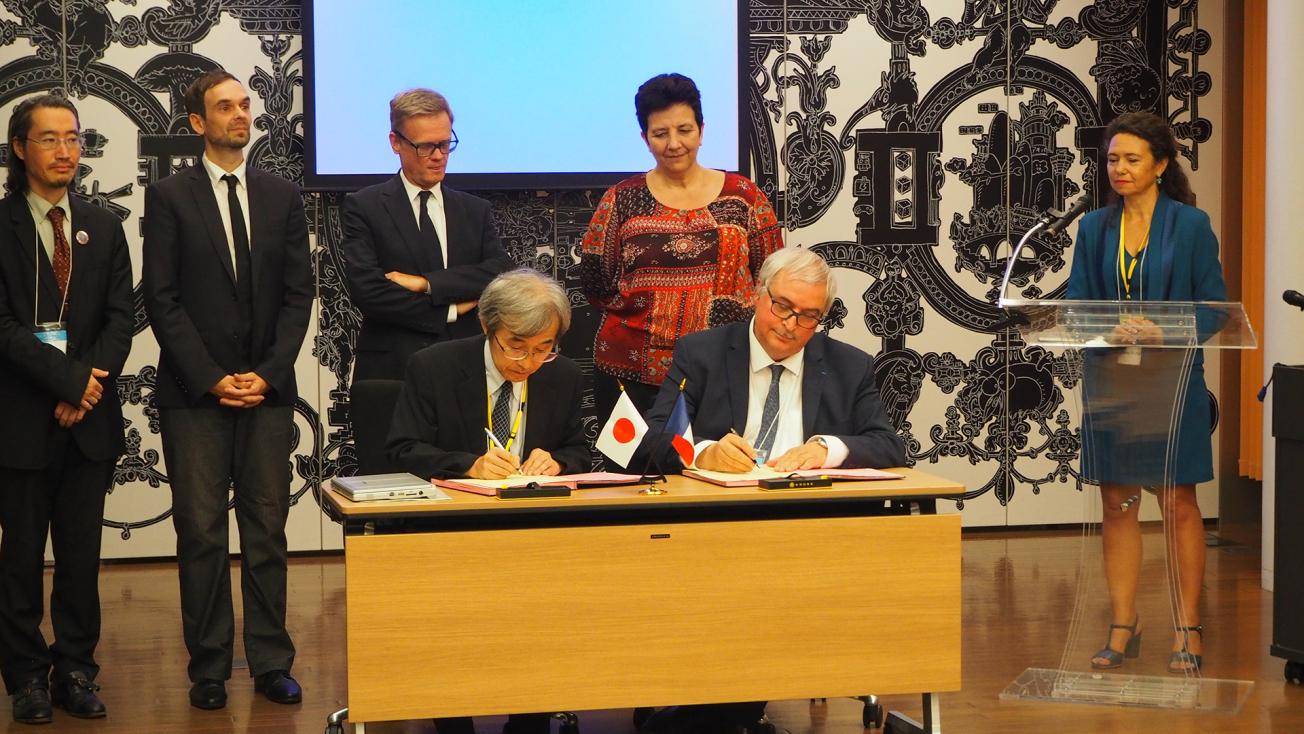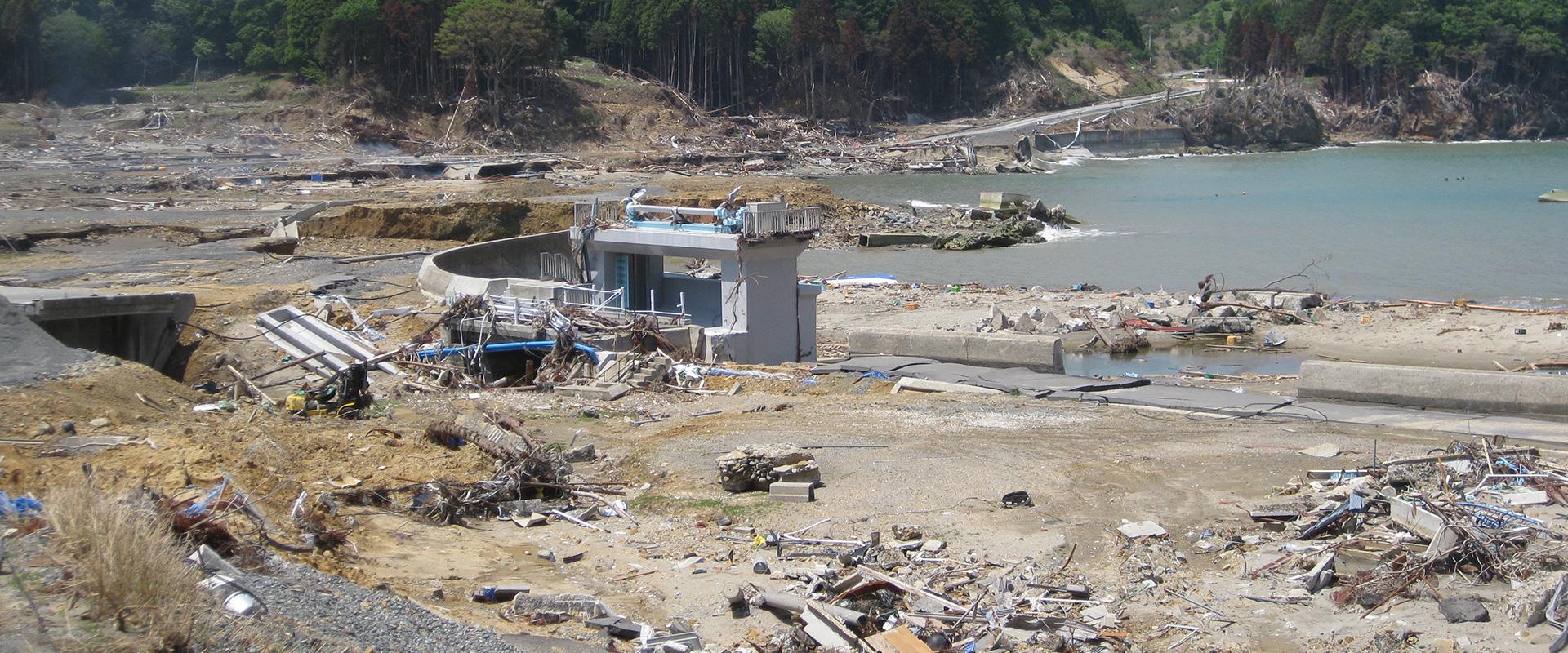
Signature of the framework agreement between the BRGM, represented by Pierre Toulhoat, and ERI, represented by Kazushige Obara.
© BRGM
On 2 October 2017, in the presence of the Minister for Higher Education, Research and Innovation, the BRGM and the Earthquake Research Institute (ERI) of the University of Tokyo undertook to join forces in their research on muographic imaging for natural risk prevention, which uses 3D muon-based tomography.
For 27 years, the BRGM has been a shareholder of IRIS Instruments, a company specialising in geophysics instrumentation together with OYO, a Japanese company.
OYO has been engaged for the last two years in a project in partnership with the BRGM and CNRS to develop a more compact muon sensor than the prototypes used at present in research laboratories.
An undertaking for better anticipation of natural risks
In the presence of Frédérique Vidal, the French Minister for Higher Education, Research and Innovation, the BRGM and the ERI have undertaken, through a framework agreement signed on 2 October 2017 in Japan, to organise student and researcher exchanges and jointly investigate key natural risks issues.
This undertaking will enable assessments among geoscientists of the use of muographic imaging to understand and anticipate natural risks. The concomitant development of muon sensors by IRIS Instruments will speed up commercial availability of solutions when proof exists of the relevance of muography in the range of geophysics techniques.
The framework agreement covers a continuum of research, teaching through research and innovation.
Investigating density variations in large rock masses
Muons are elementary particles of cosmic origin produced in the atmosphere, which travel down to the Earth's surface and can continue down to several hundred metres below the surface until they are finally absorbed by the rock material.
This particular property of muons has prompted scientists at the BRGM and ERI to use them to survey density variations in large rock masses such as volcanoes or rocky landslides. The use of muons relies on muography, an imaging technique similar to medical imaging but where the emitting source is natural and passive.







